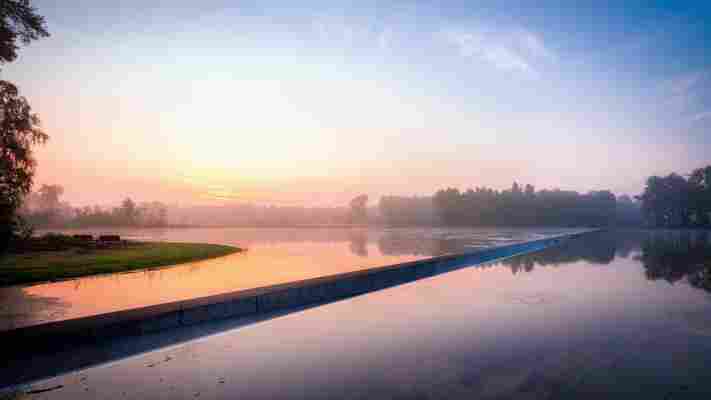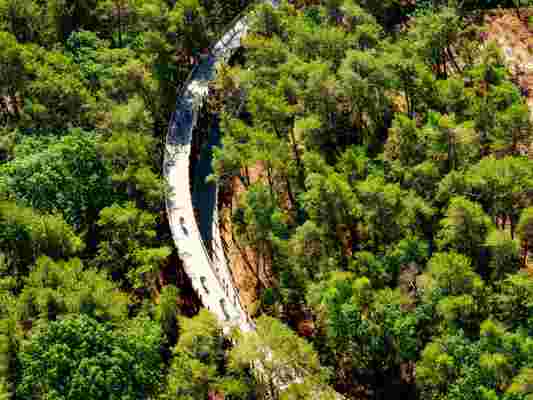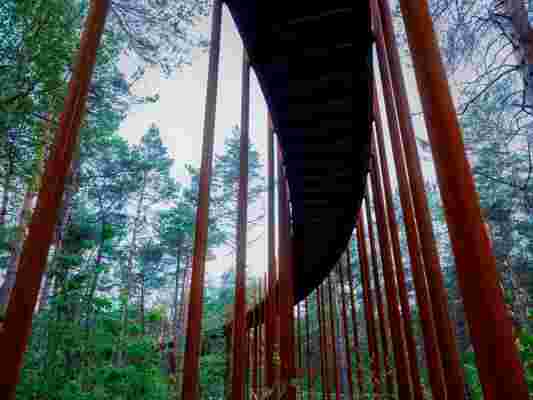Limburg, Belgium, has been a destination for biking enthusiasts since it debuted its cycling network in 1995, which includes over 1,200 miles of paved paths. As these types of routes gained popularity in other countries, the region decided to add attractions that would create new ways for cyclists to interact with the natural landscape. “We visited Norway, where we discovered the Norwegian Scenic Routes along selected roads,” says Igor Philtjens, chairman of Visit Limburg and minister for Regional Tourism. “Natural wonders are amplified by art, design, and architecture meant to bring you closer to nature in new and surprising ways. For this project we carried out interventions in certain landscapes to ensure that visitors can enjoy the landscape even more without damaging or devaluing it.”

The designers of the path looked to successful projects done in nearby Norway for their inspiration.
The first project added to the network was Cycling Through Water, a 656-foot concrete path through a pond in Bokrijk, a park complex with a 19th-century castle, an open-air museum, an arboretum, a nature reserve, and a historic pond complex. Lens°ass architecten designed the bike path, the top of which is level with the water, and Flemish landscape architecture firm BuroLandschap integrated the route into the environment.

An aerial view shows the multiple paths afforded to cyclists.
According to Philtjens, an average of 650 visitors explore Cycling Through Water daily, and the path has accommodated 3,500 visitors on peak days. “The project has ensured that European-protected nature in the area is greatly improved,” says Pieter Daenen of BuroLandschap. “We can already see that disappeared vegetation is returning and rare amphibians are multiplying.”

The architects placed sections of the path some 121 feet in the air.
The newest addition to the route is Cycling Through the Trees, which opened this past June. Cyclists travel up a circular trail that rises almost 33 feet off the ground through a forest of conifers. BuroLandschap, which designed the project, was careful to reduce the impact on the environment, beginning with the number of trees removed. “The construction was prepared as much as possible in the workshop and then fully assembled—and assembled on site, like a big puzzle,” says Daenen. “In the center of the circle, we placed a large building crane, 121 feet high, which was far above the trees and made it possible to build the entire structure on site. By using a construction crane, we avoided soil compaction and unnecessary logging in the remaining part of the forest stock.”
The ultimate resource for design industry professionals, brought to you by the editors of Architectural Digest
Limburg has two more projects on the way, starting with Cycling Through the Heathland, located in the Hoge Kempen National Park, which is set to open this summer. “The impressive 984-foot-long construction will connect the National Park on both sides, fixing a missing link on our cycle node network, and give cyclists a spectacular view over the landscape,” says Philtjens. The final phase of the design is Cycling Underground, which will take bicyclists through in the Marl Caves in Kanne (in the south of Limburg).
